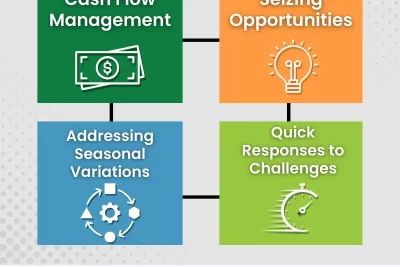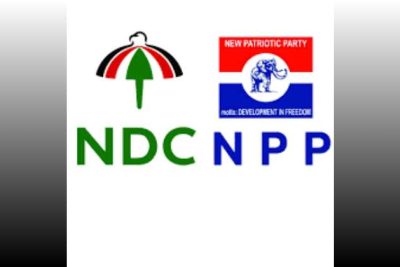
University of Minnesota Early Action Acceptance Rate: What You Need to Know for 2023

- Understanding the University of Minnesota Early Action Acceptance Rate
- Factors Influencing the University of Minnesota Early Action Acceptance Rate
- How to Improve Your Chances for Early Action Admission at the University of Minnesota
- Comparing the University of Minnesota Early Action Acceptance Rate with Other Institutions
- Key Dates and Deadlines for University of Minnesota Early Action Applicants
Understanding the University of Minnesota Early Action Acceptance Rate
The University of Minnesota (UMN) offers an Early Action application option, allowing students to apply early and receive admission decisions ahead of the regular admission cycle. This approach is particularly appealing to high school seniors who are eager to secure their college placements. Understanding the Early Action acceptance rate is crucial for prospective students as it can influence their application strategy and expectations.
The Early Action acceptance rate at the University of Minnesota can vary from year to year, influenced by factors such as the overall number of applicants, the quality of the applicant pool, and institutional goals. In recent admissions cycles, the Early Action acceptance rate has generally been higher than the regular admission acceptance rate. This trend can be attributed to the university’s desire to attract motivated students who demonstrate a strong commitment to their education.
Key factors that impact the Early Action acceptance rate include:
- Applicant qualifications: High academic performance, standardized test scores, and extracurricular involvement can enhance a students chances.
- Number of applications: A surge in applications can lead to a more competitive pool, affecting acceptance rates.
- Institutional priorities: The university may prioritize certain demographics or programs, impacting overall acceptance statistics.
Additionally, applying through the Early Action option does not bind students to attend UMN, allowing them to explore other options while securing an early decision. This flexibility can be beneficial, particularly for those who want to take their time to assess their fit with the university. Understanding these nuances can help students make informed decisions about their application strategies and timelines.
Factors Influencing the University of Minnesota Early Action Acceptance Rate
The University of Minnesotas Early Action acceptance rate is shaped by a variety of factors that prospective students should consider when applying. Understanding these elements can help applicants strengthen their applications and increase their chances of acceptance.
Academic Performance
One of the most significant factors influencing acceptance rates is the applicants academic performance. This includes:
- GPA: A high grade point average is critical, as it reflects a students overall academic achievement.
- Standardized Test Scores: While the University of Minnesota has adopted a test-optional policy, strong ACT or SAT scores can still bolster an application.
- Course Rigor: Enrollment in advanced placement (AP), honors, or international baccalaureate (IB) courses demonstrates a commitment to challenging oneself academically.
Extracurricular Involvement
Extracurricular activities play a vital role in the admissions process. The university looks for well-rounded candidates who contribute to their communities and demonstrate leadership. Important aspects include:
- Leadership Roles: Positions of responsibility in clubs, sports, or organizations highlight a students ability to lead and collaborate.
- Volunteer Work: Community service can showcase a candidates commitment to social responsibility and personal growth.
- Unique Talents: Exceptional skills in areas such as the arts, athletics, or academics can set an applicant apart from others.
Personal Statements and Recommendations
The quality of personal statements and letters of recommendation also significantly impacts acceptance rates. These components provide insight into an applicants personality, motivations, and potential fit for the university. Key considerations include:
- Personal Statement: A compelling narrative that reflects a students values, experiences, and aspirations can resonate with admissions officers.
- Recommendations: Strong endorsements from teachers or mentors who know the applicant well can enhance credibility and provide context to academic achievements.
Each of these factors intertwines to create a holistic view of the applicant, influencing the Early Action acceptance rate at the University of Minnesota.
How to Improve Your Chances for Early Action Admission at the University of Minnesota
To enhance your chances of securing Early Action admission at the University of Minnesota, it’s essential to understand the university’s expectations and requirements. Start by ensuring that your application is complete and submitted on time. The Early Action deadline typically falls on November 1st, so plan accordingly to avoid last-minute stress. This means gathering all necessary documents, including transcripts, letters of recommendation, and test scores, well in advance.
Focus on Academic Performance: The University of Minnesota places a strong emphasis on academic excellence. A competitive GPA is crucial, so aim for a strong course load throughout high school, particularly in challenging subjects. Additionally, standardized test scores (ACT/SAT) play a significant role in the admissions process. If you haven’t already, consider taking these tests early in your junior year to allow time for retakes if needed.
Highlight Extracurricular Involvement: Admissions officers at the University of Minnesota look for well-rounded candidates who demonstrate leadership and commitment outside the classroom. Engage in extracurricular activities that resonate with your interests, whether in sports, arts, or community service. Make sure to highlight any leadership roles or significant contributions in your application. A strong personal statement can also complement your academic achievements, showcasing your passion and motivation for attending the university.
Personalize Your Application: Tailoring your application can significantly impact your chances of admission. Take the time to research the University of Minnesota’s programs, values, and campus culture. Incorporate this knowledge into your application materials, particularly in your essays. Demonstrating a genuine interest in the university and how it aligns with your academic and career goals can set you apart from other applicants. Remember to proofread all materials to ensure clarity and professionalism, as attention to detail is critical in the application process.
Comparing the University of Minnesota Early Action Acceptance Rate with Other Institutions
When evaluating the University of Minnesotas Early Action acceptance rate, its essential to contextualize this figure against other similar institutions. The Early Action program at the University of Minnesota allows students to apply early and receive admission decisions before the regular admission cycle. This strategy is designed to benefit both the university and prospective students by allowing for a more streamlined admissions process.
In comparison, many universities in the Midwest and across the United States have adopted similar Early Action policies. For instance, the University of Wisconsin-Madison typically reports an Early Action acceptance rate that can fluctuate around 40-50%. In contrast, the University of Michigan often showcases a more competitive Early Action acceptance rate, hovering around 25-30%. These figures illustrate that while the University of Minnesota maintains a relatively accessible Early Action acceptance rate, other institutions may present more stringent admission criteria.
To further illustrate this comparison, here are some key statistics regarding Early Action acceptance rates at selected universities:
- University of Minnesota: Approximately 60% acceptance rate for Early Action applicants.
- University of Wisconsin-Madison: Approximately 40-50% acceptance rate.
- University of Michigan: Approximately 25-30% acceptance rate.
- University of Illinois at Urbana-Champaign: Approximately 50% acceptance rate.
These differences in acceptance rates highlight the varying levels of competitiveness among universities, which can influence a students decision when applying. The University of Minnesotas higher acceptance rate for Early Action applicants may appeal to students seeking a balanced approach to their college applications, especially when compared to more selective institutions.
Key Dates and Deadlines for University of Minnesota Early Action Applicants
When applying to the University of Minnesota through the Early Action program, it is essential to be aware of specific key dates and deadlines to ensure your application is submitted on time. Early Action applicants can benefit from an expedited review process, and staying organized with these dates will help you navigate the application journey smoothly.
Important Dates to Remember:
- Application Opening: The application for Early Action typically opens on August 1.
- Early Action Deadline: All application materials must be submitted by November 1.
- Notification Date: Applicants will receive their admission decisions by mid-December.
- Enrollment Confirmation Deadline: Accepted students must confirm their enrollment by May 1.
In addition to these critical dates, it is important to keep track of other related deadlines, such as submitting standardized test scores and financial aid applications. For instance, if you plan to apply for financial aid, the Free Application for Federal Student Aid (FAFSA) is typically due by December 1 for Early Action applicants.
Lastly, remember that while Early Action is a non-binding option, it is crucial to adhere to these deadlines to maximize your chances of admission. Being proactive and organized can make a significant difference in your application experience at the University of Minnesota.
Did you find this article helpful? University of Minnesota Early Action Acceptance Rate: What You Need to Know for 2023 See more here General.
Leave a Reply





Related posts